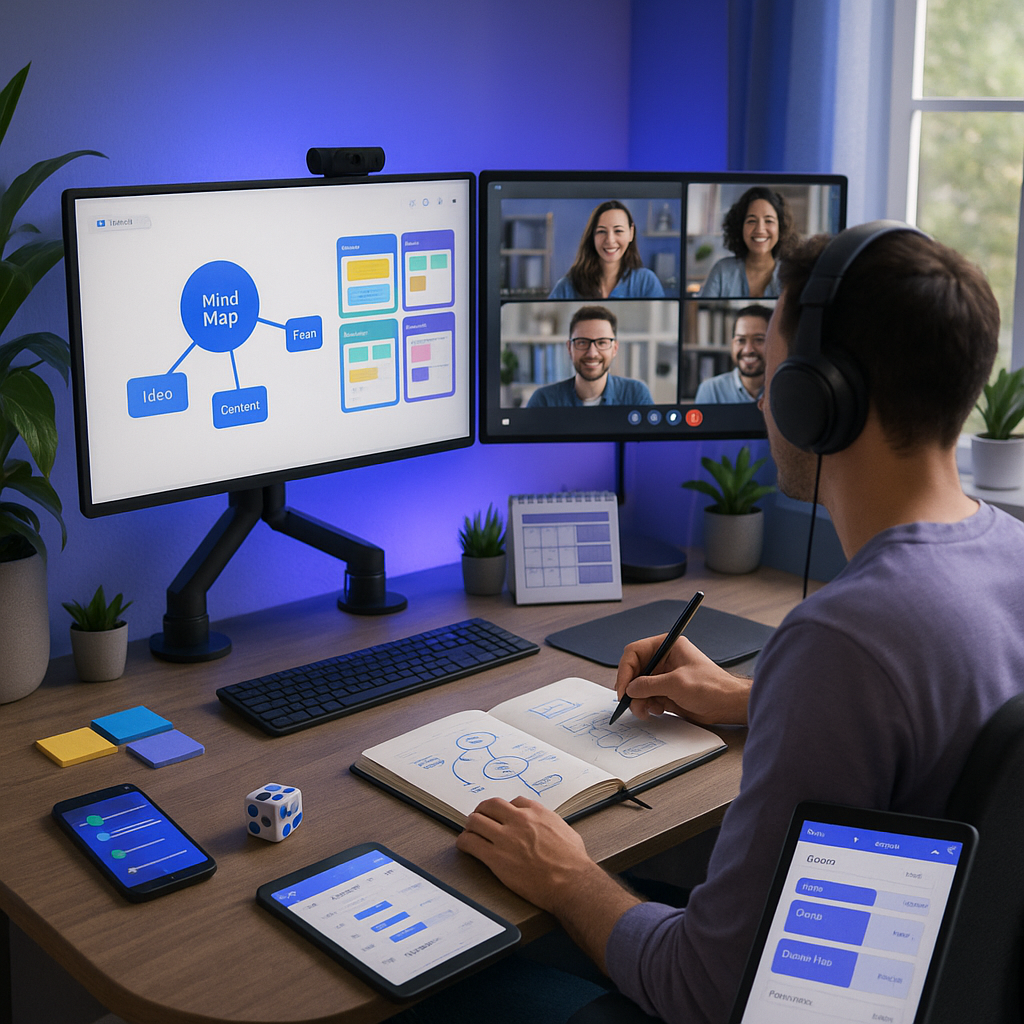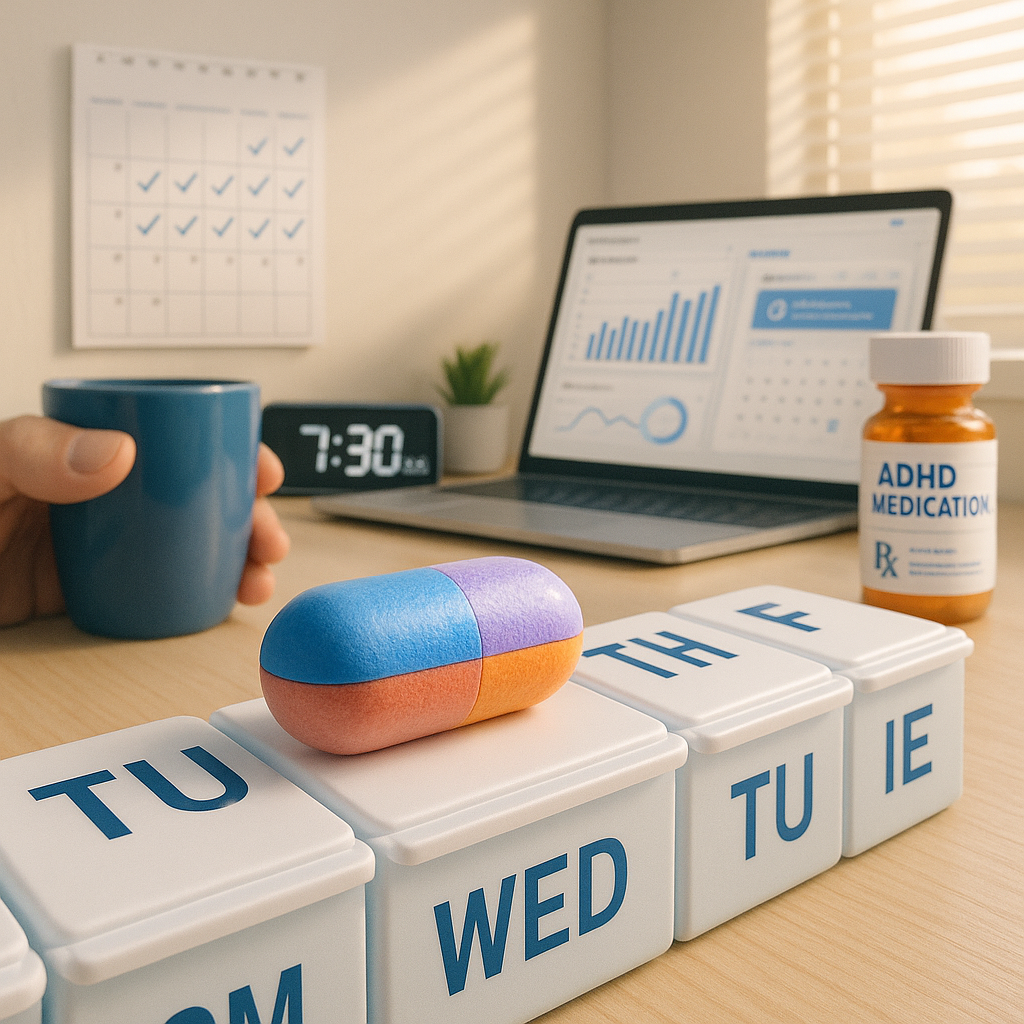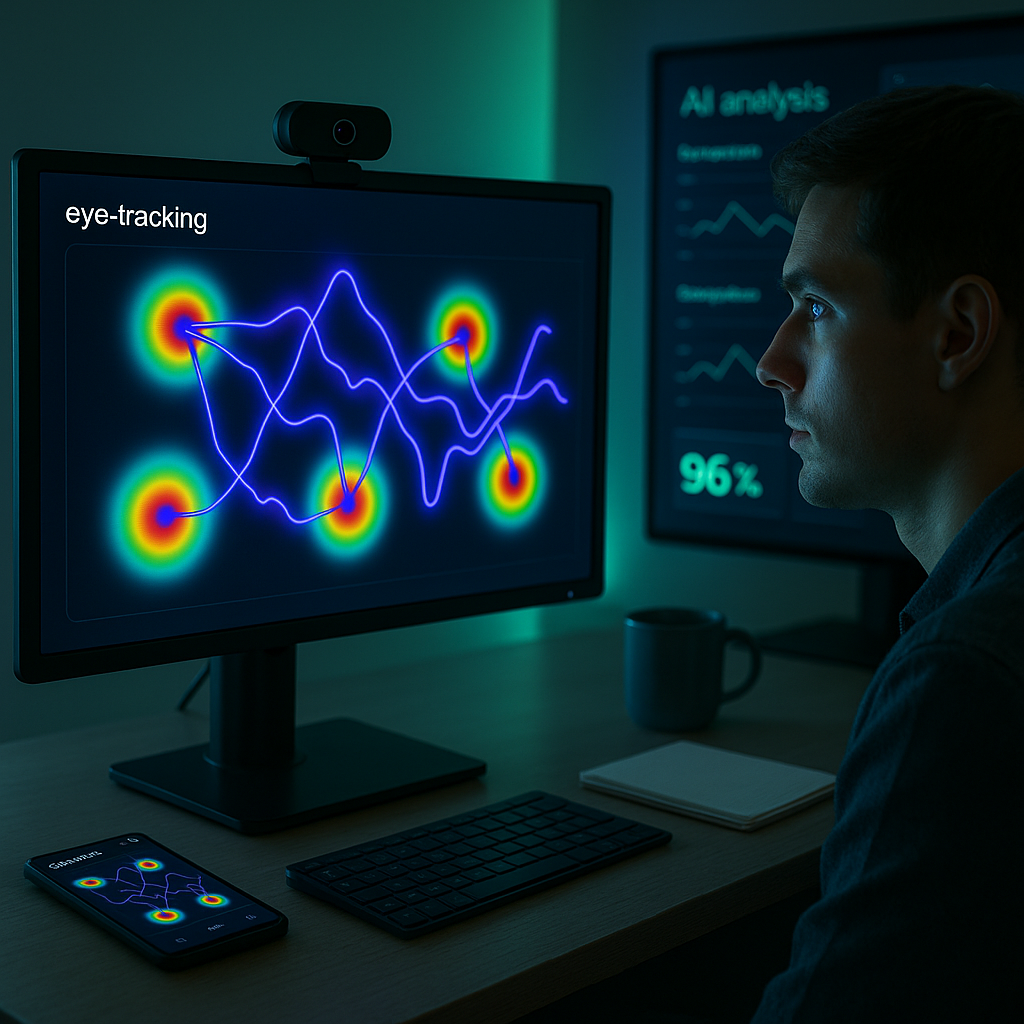Key Takeaways
- Embrace flexible communication channels tailored for diverse thinkers. Utilizing multiple formats such as chat, video, and asynchronous updates empowers neurodivergent team members to process information at their own pace. This approach reduces overwhelm and minimizes misunderstandings.
- Build transparent, low-pressure feedback loops. Frequent, brief check-ins along with emojis or reactions foster a supportive and stress-free feedback culture, making it easier for all team members (including ADHD leaders) to adapt and grow without anxiety.
- Make collaboration visual and tangible. Shared documents, digital whiteboards, and project trackers transform abstract plans into concrete, actionable roadmaps. This clarity benefits ADHD minds and enhances team participation.
- Favor structured flexibility over micromanagement. Set clear weekly goals while allowing flexibility in daily workflows. This balance supports consistency and autonomy, enabling each person to play to their strengths within adaptable boundaries.
- Model vulnerability to invite authentic dialogue. When ADHD leaders openly discuss their focus challenges and adaptive techniques, they create a safer environment for everyone to raise concerns and share strategies, fostering trust and long-term engagement.
- Automate reminders and routines to prevent missed connections. Leveraging tools like nudges, calendar syncs, and automated check-ins ensures momentum and reduces cognitive overload for the entire team.
- Celebrate diverse working styles as valuable assets. By shifting from “fixing” differences to leveraging them, teams unlock creative solutions, build deeper empathy, and create stronger cohesion.
When remote teams integrate these ADHD-informed strategies, they transform perceived vulnerabilities into superpowers. The result is enhanced creative synergy, genuine connection, and sustained performance. Next, let’s explore real-world examples and practical systems for leading with both structure and humanity across a range of industries.
Introduction
There’s a common misconception that ADHD makes remote leadership more challenging. Yet, for many neurodivergent leaders, the remote work shift isn’t just a change in environment. It’s an opening to reimagine collaboration, communication, and management through a lens of flexible thinking and authentic dialogue.
Traditional models often fall short for neurodivergent professionals. By incorporating a mix of chat, video, and asynchronous updates, feedback becomes more supportive and tasks more tangible through visual tools. This approach, grounded in structured flexibility and celebrating diverse working styles, allows leaders to turn obstacles into assets. The result? Remote teams that thrive on clarity, trust, and adaptability.
Let’s delve into actionable lessons and proven frameworks that help ADHD leaders, and professionals of all backgrounds, unlock team synergy in our increasingly digital workplaces.
Rethinking Team Management for the ADHD Brain
To build high-performing remote teams, it is crucial to recognize that traditional management approaches may not fit the ADHD mind’s natural strengths. Rather than resisting these tendencies, effective leadership draws upon them to create innovative team dynamics.
Building on Natural Strengths
The ADHD mind thrives with parallel processing and creative problem-solving, abilities that prove invaluable in remote settings across industries such as healthcare, finance, and education.
- Hyperfocus Sessions: Designate intensive work blocks at peak energy times. This can lead to breakthroughs in fields like marketing campaign ideation or data analysis projects.
- Rapid Context Switching: Leverage this capability to manage multiple projects or clients in sectors like consulting or customer service, especially when teams span different time zones.
- Pattern Recognition: Spot emerging trends and potential workflow snags early in fields like cybersecurity or product development.
For example, a tech startup founder realized that scheduling collaborative brainstorming during personal periods of hyperfocus resulted in 40% more innovative solutions for product features. Similarly, a healthcare project manager found that rapid context switching was key to juggling patient case management alongside regulatory reporting.
Creating Dynamic Systems
ADHD leaders often excel with fluid organizational structures, benefiting creative and compliance-driven environments alike.
- Rotating Project Leads: Assign temporary leadership roles aligned with interest and expertise. This boosts engagement in nonprofit teams and marketing agencies.
- Interest-Based Task Distribution: Match tasks to evolving team interests, improving motivation in fast-paced industries like finance or e-commerce.
- Energy-Aware Scheduling: Align meetings and sprints with team energy rhythms; shown to improve outcomes in education and legal project planning.
These adaptive systems naturally support remote work’s inherent flexibility, building the foundation for varied communication strategies that accommodate each team’s unique needs.
Flexible Communication Styles That Work
Adaptable communication is a key strength for ADHD leaders and is essential for teams spanning multiple industries and work styles. In remote settings, a tailored communication strategy ensures every member can contribute and engage effectively.
Multimodal Communication Strategy
Implementing diverse ways to connect keeps information accessible and actionable for the entire team.
-
Synchronous Options:
-
Brief video check-ins (fifteen minutes or less) work well for sales and creative teams needing momentum.
-
Voice memos simplify complex updates in technical fields like software development or research.
-
Real-time chat is indispensable for retail or customer support teams managing urgent queries.
-
Asynchronous Tools:
-
Comprehensive written documentation supports legal and compliance teams needing detailed records.
-
Screen recordings provide step-by-step guidance for IT or design departments.
-
Shared digital whiteboards facilitate brainstorming and project mapping in marketing and education.
For instance, after a project manager in a financial services firm adopted this approach, team engagement increased by 65%. “Different team members absorb information differently, just like I do,” they said, highlighting the inclusive power of multimodal communication.
Setting Clear Expectations
Establishing transparent protocols benefits everyone, especially in regulated or customer-facing sectors.
- Clearly define response times for email, chat, and ticketing systems.
- Distinguish between emergency and routine communication paths. This is vital in healthcare and crisis management.
- Dedicate “focus time” where interruptions are minimized, supporting deep work in engineering, academia, and design.
This balance between structure and flexibility creates an environment where productivity flourishes for neurodivergent and neurotypical team members alike, providing a smooth transition to robust feedback systems.
Creating Effective Feedback Loops
Delivering consistent, constructive feedback is often challenging for ADHD leaders. With intentional design, however, it becomes a catalyst for growth and innovation across all team types.
Building Psychological Safety
Intentional trust-building is the cornerstone of successful remote teams in industries from technology to education.
- Regular Check-ins: Keep conversations brief and supportive, shifting away from surveillance toward growth.
- Open Dialogue Channels: Offer multiple avenues (anonymous forms, team forums, or direct messages) for raising ideas or concerns.
- Celebration of Mistakes: Cultivate a culture where missteps are reframed as learning opportunities. This reduces fear of failure in scientific research and creative agencies.
A software team leader noted that after implementing regular, open check-ins, collaborative problem-solving improved by 80%. Nurses and healthcare teams report similar gains when trust-based feedback is central to operations.
Automated Feedback Systems
Employ automated tools that support regular, constructive feedback without adding burden. This is particularly helpful for sectors with distributed teams or strict deadlines.
- Automated Progress Tracking: Project management platforms (like Monday, Asana, or Trello) generate regular updates for finance, marketing, and legal projects.
- Milestone Celebrations: Scheduled recognition emails or digital high-fives mark achievements in sales and R&D, building morale.
- Anonymous Pulse Surveys: Regular surveys provide honest input in larger organizations or educational settings.
These systems create reliable, low-friction feedback loops and set the stage for integrating visual collaboration tools that further minimize ambiguity.
Leveraging Visual Collaboration Tools
For many neurodivergent thinkers, translating words into visual structures is key. Harnessing visual collaboration platforms turns abstract strategies into shared understanding, benefiting a spectrum of industries.
Digital Whiteboarding Practices
Transforming concepts into visual blueprints boosts comprehension and alignment.
- Project Roadmaps: Platforms like Miro or Jamboard make timelines and milestones clear, critical in product launches and consulting workflows.
- Decision Trees: Map process flows for healthcare protocols, customer journey mapping, or regulatory compliance.
- Idea Clouds: Mind-mapping tools foster brainstorming in creative agencies, curriculum planning in education, and environmental science research.
One marketing team that implemented digital whiteboarding saw misunderstandings cut in half and project completion rates rise by 30%. In legal practices, visual timelines have made case tracking simpler and deadlines more visible.
Visual Documentation Systems
Clear visual cues help teams prioritize and navigate complex projects.
- Color-coding: Use colors to signal task priority for manufacturing, e-commerce, and software deployment.
- Visual Tags: Different icons denote statuses or team assignments in HR, logistics, and marketing.
- Infographic Guides: Converting processes into infographics provides digestible reference for onboarding, compliance, and customer education.
These approaches combine structure with clarity, paving the way for team systems that honor both neurodiversity and productivity.
Conclusion
Reimagining team management through the ADHD lens uncovers powerful strategies for more adaptive, resilient, and innovative remote teams. The most effective leaders do not suppress traits like hyperfocus, rapid context switching, or unconventional problem-solving. Instead, they harness these abilities to create systems that drive teams toward collective brilliance.
By combining dynamic organizational structures, multimodal communication, visual tools, and automated feedback, neurodivergent leaders not only enhance their own effectiveness but unleash the full potential of every team member. This approach has already proven successful across healthcare, education, technology, legal, and creative industries.
As remote work becomes the norm, intentional design for flexibility, psychological safety, and clarity is now a competitive advantage. The future of leadership will belong to organizations that understand and leverage neurodivergent strengths. The next step is to not just accommodate difference, but to see it as the engine of your team’s success.
What untapped innovations might your business achieve by empowering every way of thinking? The ultimate question is not whether you’ll adapt to these strategies, but how creatively and boldly you’ll put them into action to propel your organization ahead.





Leave a Reply